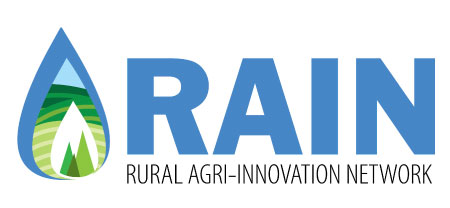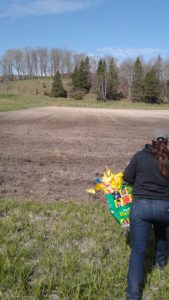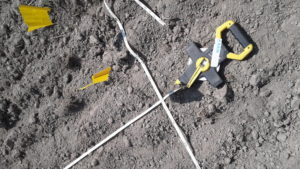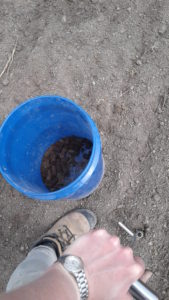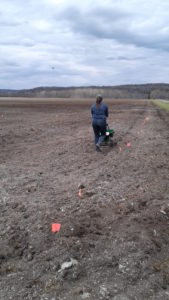by Christine O’Reilly, Research Technician
It’s spring in Algoma, and that means that RAIN’s field staff are trying to get new projects into the ground. We have three research projects and a crop demonstration to plant on ten different sites across the district. We’ve got a good start on two of these.
Our Cross-seeding Forages Project is evaluating different ways to plant the hay and pasture fields farmers need to feed their cows. This method can reduce soil erosion, improve grass yields, and increase the nutritional value to the cattle. It’s not commonly used in Ontario because it takes longer, and planting is one of the busiest times of the year for farmers. We are testing out the economics to see if it makes sense for farmers to change how they plant these fields, even though it takes more time.
The Sulphur Fertilization Project is investigating whether crops in Algoma benefit from added sulphur. Sulphur is a nutrient plants need to make seeds and to perform photosynthesis. Unfortunately, sulphur is one of a few crop nutrients that don’t always respond like the soil test says it should. We will see what rate of sulphur helps cabbages grow bigger and stay fresh on the shelf longer. We will also look at the best source of sulphur by comparing two different fertilizers on canola, which ends up in cooking oil and margarine.
Things got busy for us on May 12, when two sites for the Cross-seeding Forages Project were planted, and we established plots in the canola field. The canola had been planted the day before. We marked the plots using flags, so we would know where to apply the different fertilizers. Before adding anything, we took some soil samples. Those are sent to the lab, where they can tell us what nutrients are already available to the crop. Once we know what is in the soil, we only add what is missing for the canola to grow healthy and strong. Lastly, we added our sulphur treatments.
To date, three of four cross-seeding sites are established. The canola is ready and growing, and one of our vegetable sites has been fertilized and will be planted soon.
Thanks goes out to the farmer partners involved in these trials.
Proudly supported by FedNor.
This project was funded in part through Growing Forward 2 (GF2), a federal-provincial-territorial initiative. The Agricultural Adaptation Council assists in the delivery of GF2 in Ontario.
